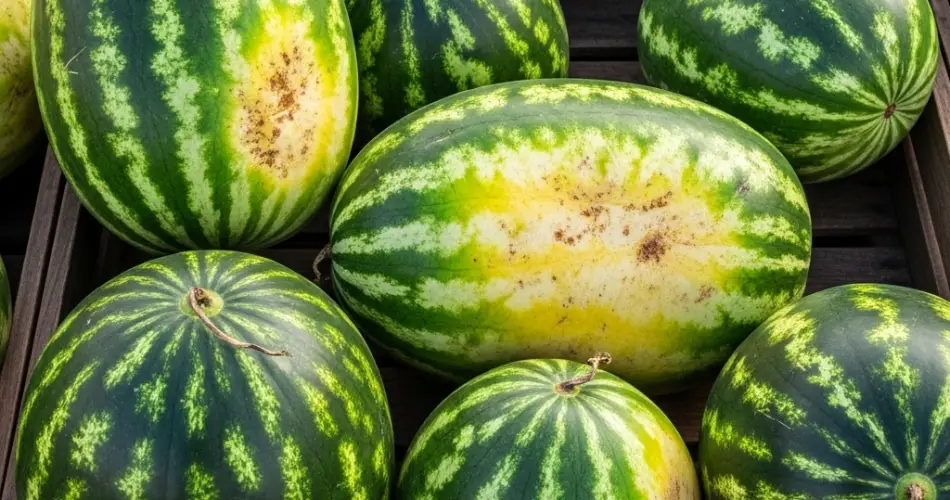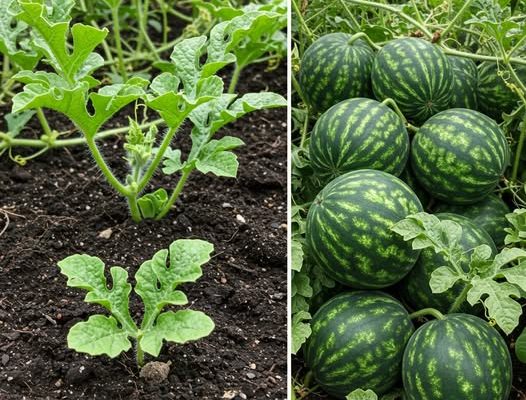Watermelon is a delicious, refreshing fruit loved by many around the world, especially during warm seasons. But did you know you can grow your own watermelons at home using seeds from the supermarket fruit? Whether you have a garden or just some pots on your balcony, it’s entirely possible to cultivate watermelons with a bit of care and patience.
In this article, we’ll explore how to plant watermelon seeds from supermarket melons in pots, the process of germination, care tips, and what results you can expect when growing watermelons this way.
Why Grow Watermelons from Supermarket Seeds?
Many gardeners enjoy the challenge and satisfaction of growing fruits and vegetables from seeds. Using watermelon seeds from supermarket fruit is a cost-effective and accessible way to start, especially if you don’t want to buy commercial seeds. Plus, it’s a great experiment to see what grows in your environment!
Keep in mind that supermarket watermelons are often hybrids, so the seeds may not produce fruit identical to the parent melon. However, you can still enjoy the process and the fruits of your labor.
Step 1: Preparing Watermelon Seeds
The first step is to extract viable seeds from the watermelon:
-
-
Cut open a ripe watermelon and collect the seeds.
-
Rinse the seeds under water to remove any flesh and juice.
-
-
Spread the seeds on a paper towel or cloth and allow them to dry completely over a few days. Dry seeds store better and germinate more reliably.

Step 2: Germinating Watermelon Seeds
Germination is the process where seeds sprout and begin to grow. To successfully germinate watermelon seeds:
-
-
Fill small pots or seed trays with quality seed-starting mix, which is light and drains well.
-
Plant each seed about 1 to 2 cm deep into the soil.
-
Water the soil gently but thoroughly, keeping it consistently moist but not soggy.
-
-
Place the pots in a warm area with indirect sunlight. Watermelon seeds germinate best at temperatures between 21°C and 30°C (70°F to 85°F).
-
Seeds typically sprout within 5 to 10 days.
Step 3: Caring for Watermelon Seedlings
Once seedlings emerge:
-
-
Ensure they receive plenty of sunlight — ideally 6 to 8 hours of direct sun daily.
-
Keep the soil moist but not waterlogged. Watermelons need steady moisture during growth.
-
-
Thin seedlings if multiple seeds sprouted too close together, leaving only the strongest plant in each pot.
-
Fertilize seedlings lightly with a balanced, water-soluble fertilizer every couple of weeks.
Step 4: Transplanting or Growing in Pots
Watermelons are sprawling vines that need space to grow. If you have a garden, transplant seedlings after the danger of frost has passed and soil is warm. If growing in pots, choose large containers (at least 20 gallons) with good drainage.
When growing in pots:
-
-
Use high-quality potting soil mixed with compost for nutrients.
-
Provide a trellis or support if you want to train vines vertically, or allow vines to spread.
-
Ensure consistent watering and fertilization.
-
-
Monitor for pests like aphids or powdery mildew, treating as needed with organic remedies.
Step 5: Flowering and Fruit Development
Watermelon plants typically flower 30 to 50 days after germination. Flowers are essential for fruit production, and watermelons are pollinated by bees and other insects. If you don’t have natural pollinators, you can hand-pollinate by transferring pollen from male to female flowers using a small brush.
Once pollinated, fruit will start developing and grow over 30 to 40 days. Watermelons grown in pots tend to be smaller than those in open fields but can still be sweet and tasty.
What to Expect: The Results of Planting Supermarket Watermelon Seeds
Growing watermelon from supermarket seeds in pots is a rewarding experiment. Expect:
-
-
Some seeds may not germinate, especially if the melon was hybrid or seeds were processed.
-
Plants may produce smaller fruit than commercial melons.
-
-
The taste is usually good, though not always exactly like the original fruit.
-
Vines will grow vigorously if given enough light, water, and nutrients.
With patience and care, you’ll enjoy fresh homegrown watermelons right from your pots.
Additional Tips for Success
-
-
Watermelons need warm weather. Avoid planting too early in cool climates.
-
Mulch soil surface to conserve moisture and regulate temperature.
-
-
Rotate crops yearly if planting in garden soil to prevent disease buildup.
-
Harvest watermelons when the tendril nearest the fruit turns brown and dries, and the fruit sounds hollow when tapped.
Conclusion
Planting watermelon seeds from supermarket fruit in pots is an accessible way to try your hand at growing this beloved fruit at home. From preparing seeds and germinating them to caring for seedlings and harvesting fruit, the process is both fun and educational.
Even if the watermelons don’t reach the size of store-bought ones, the experience of growing your own fruit and watching your plants thrive is well worth the effort. Whether you have a garden space or just a balcony, growing watermelons in pots can bring a taste of summer and a bit of nature into your home.
Give it a try and enjoy the sweet rewards!


